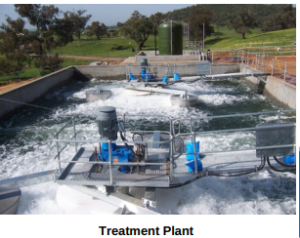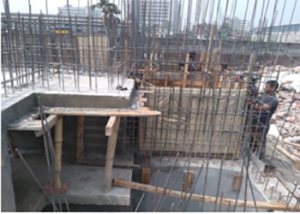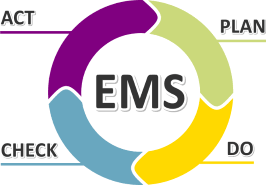1.Environmental Management System.
2.Energy.
3.Water.
4.Wastewater.
5.Air Emissions.
6.Chemicals Management
ETP SITE DEVELOPMENT BY AIPRO
Aipro is a pioneer in the field of Environment and providing Consultancy services for the last 3 years. Our main purpose is to determine your compliance status with relevant environmental permits. We provide comprehensive guidance, a document that contains additional background information, guidance and references to aid facilities and guide through the completion of any facilities or project requirements. Aipro Perform Higg Program (Environmental) Requirement Solution of various section namely:
EFFLUENT TREATMENT PLANT
Effluent Treatment Plant or ETP is one type of waste water treatment method which is particularly designed to purify industrial waste water for its reuse and it’s aim is to release safe water to environment from the harmful effect caused by the effluent.
BENEFITS OF ETP :
To clean industry effluent and recycle it for further use: To meet the standards for discharge of pollutants set by the Government & avoid heavy penalty. The term “Sewage Treatment Plant (STP)” is nowadays often replaced with the term “Wastewater Treatment Plant (WTP)”. Sewage can be treated close to where the sewage is created, which may be called a “decentralized” system or even an “on-site” system (in septic tanks, biofilters or aerobic treatment systems). Alternatively, sewage can be recollected and transported by a network of pipes and pump stations to a municipal treatment plant. Water treatment removes contaminants and undesirable components or reduces their concentration so that the water becomes fit for its desired end-use. Rainwater Harvesting is a way of accumulating and preserving the superfluous water during rainy seasons and making it available for use during dry times. This concept is particularly lucrative for agriculture dominated Bangladesh, as groundwater is unparalleled in its essentially for irrigation, and drinking water is often hard to come by for many impoverished communities.


Potential benefits of rooftop rainwater harvesting in Bangladesh :
Cutting down the annual water bill significantly for individual users. Reducing excessive pumping of groundwater and thereby minimizing the current accelerated rate of groundwater depletion. Reducing ever-increasing and prolonged waterlogging on the roads, and lanes, and also lessening the problem of soil erosion in the city. Saving the city from the potential land subsidence that can result from excessive groundwater extraction. Promoting social consciousness about water conservation, and also an efficient use of water. Making people conscious of the water resource and thereby keeping adherence to the country’s water conservation efforts
ENVIRONMENTAL IMPACT ASSESSMENT
An effective EMP helps to ensure:
Application of best practice for environmental management to a project. The implementation of a project’s EIA including its conditions of approval. Compliance with environmental legislation and Identifying environmental risks associated with a project that are properly managed.
An Environmental Management System (EMS) is a structured framework for managing an organization’s significant environmental impacts. An EMS can result in both business and environmental benefits.It helps to:
Improve environmental performance & Enhance compliance;
Prevent pollution, conserve resources & Reduce/mitigate risks;
Achieve/improve employee awareness of environmental issues and responsibilities.
Initial Environmental Examination (IEE) is a process of further inquiry into the impact assessment, taking clues from the exercise of scoping. There is, however, a fairly thin dividing line between scoping and an IEE when it comes to identification and gradation of the impact issue. IEE focuses on the assessment of impacts and identification of obvious mitigation measures. This is generally done by conducting baseline information and by collecting any available secondary data. The issues are assessed by carrying out a prediction exercise by using informal judgment, the opinion of experts, or in some occasions by using screening level mathematical models.
THE IEE STUDY THUS RESULTS IN FOLLOWING
A brief description of the expected or predicted environmental changes due to the project; Measures or procedures that could be implemented to avoid or reduce the impacts on the environment; Examination of alternatives, including the proposed action and no action; Additional study requirements, regulatory requirements, and other coordination requirements for the detailed EIA, if required.Water Audit provide a way to inventory all water uses in a facility and identify ways to increase water use efficiency. The results can helps to prioritize steps to implement cost-effective water-saving measures. Conducting a water audit can helps to save money by reducing water bill. It is possible to cut water usage by as much as 30 percent by implementing simple conservation measures.Zero discharge policy:AIPRO team perform to develop zero discharge policy as per as DoE requirement and buyer requirement. An Environmental Management System (EMS) is a structured framework for managing an organization’s significant environmental impacts. An EMS can result in both business and environmental benefits.It helps to: Improve environmental performance & Enhance compliance; Prevent pollution, conserve resources & Reduce/mitigate risks; Achieve/improve employee awareness of environmental issues and responsibilities
INITIAL ENVIRONMENTAL EXAMINATION
Initial Environmental Examination (IEE) is a process of further inquiry into the impact assessment, taking clues from the exercise of scoping. There is, however, a fairly thin dividing line between scoping and an IEE when it comes to identification and gradation of the impact issue. IEE focuses on the assessment of impacts and identification of obvious mitigation measures. This is generally done by conducting baseline information and by collecting any available secondary data. The issues are assessed by carrying out a prediction exercise by using informal judgment, the opinion of experts, or in some occasions by using screening level mathematical models.

ENVIRONMENTAL MANAGEMENT SYSTEM (EMS)
An Environmental Management System (EMS) is a structured framework for managing an organization’s significant environmental impacts. An EMS can result in both business and environmental benefits. Improve environmental performance & Enhance compliance; Prevent pollution, conserve resources & Reduce/mitigate risks;Achieve/improve employee awareness of environmental issues and responsibilities.


















